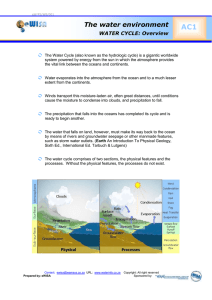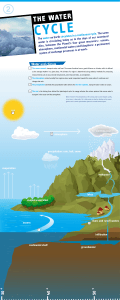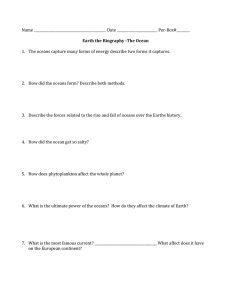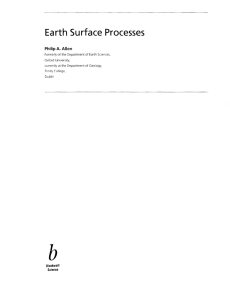The Water Cycle
advertisement
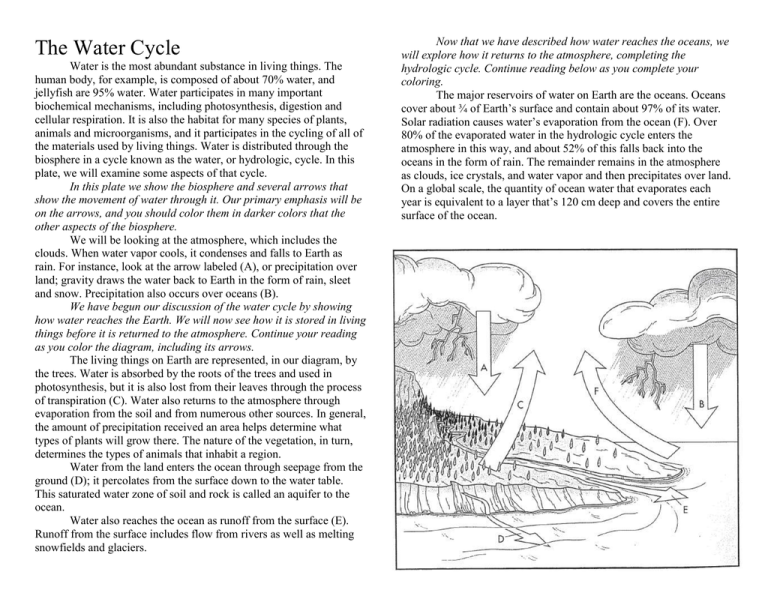
The Water Cycle Water is the most abundant substance in living things. The human body, for example, is composed of about 70% water, and jellyfish are 95% water. Water participates in many important biochemical mechanisms, including photosynthesis, digestion and cellular respiration. It is also the habitat for many species of plants, animals and microorganisms, and it participates in the cycling of all of the materials used by living things. Water is distributed through the biosphere in a cycle known as the water, or hydrologic, cycle. In this plate, we will examine some aspects of that cycle. In this plate we show the biosphere and several arrows that show the movement of water through it. Our primary emphasis will be on the arrows, and you should color them in darker colors that the other aspects of the biosphere. We will be looking at the atmosphere, which includes the clouds. When water vapor cools, it condenses and falls to Earth as rain. For instance, look at the arrow labeled (A), or precipitation over land; gravity draws the water back to Earth in the form of rain, sleet and snow. Precipitation also occurs over oceans (B). We have begun our discussion of the water cycle by showing how water reaches the Earth. We will now see how it is stored in living things before it is returned to the atmosphere. Continue your reading as you color the diagram, including its arrows. The living things on Earth are represented, in our diagram, by the trees. Water is absorbed by the roots of the trees and used in photosynthesis, but it is also lost from their leaves through the process of transpiration (C). Water also returns to the atmosphere through evaporation from the soil and from numerous other sources. In general, the amount of precipitation received an area helps determine what types of plants will grow there. The nature of the vegetation, in turn, determines the types of animals that inhabit a region. Water from the land enters the ocean through seepage from the ground (D); it percolates from the surface down to the water table. This saturated water zone of soil and rock is called an aquifer to the ocean. Water also reaches the ocean as runoff from the surface (E). Runoff from the surface includes flow from rivers as well as melting snowfields and glaciers. Now that we have described how water reaches the oceans, we will explore how it returns to the atmosphere, completing the hydrologic cycle. Continue reading below as you complete your coloring. The major reservoirs of water on Earth are the oceans. Oceans cover about ¾ of Earth’s surface and contain about 97% of its water. Solar radiation causes water’s evaporation from the ocean (F). Over 80% of the evaporated water in the hydrologic cycle enters the atmosphere in this way, and about 52% of this falls back into the oceans in the form of rain. The remainder remains in the atmosphere as clouds, ice crystals, and water vapor and then precipitates over land. On a global scale, the quantity of ocean water that evaporates each year is equivalent to a layer that’s 120 cm deep and covers the entire surface of the ocean.
